
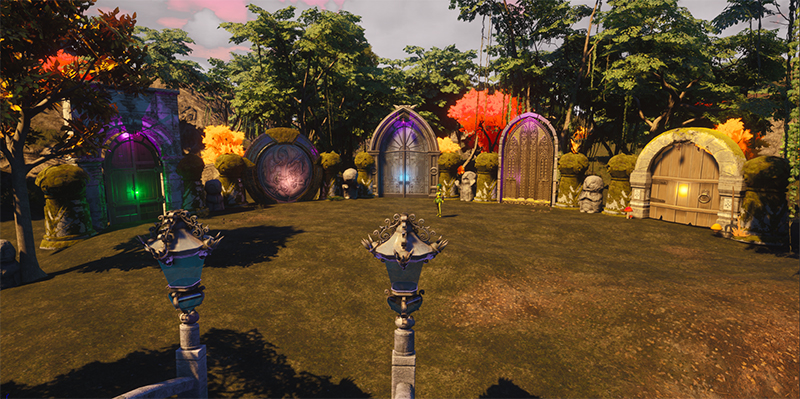
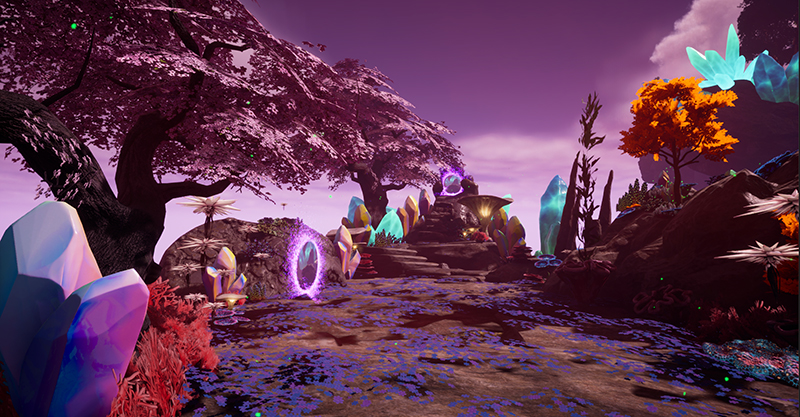
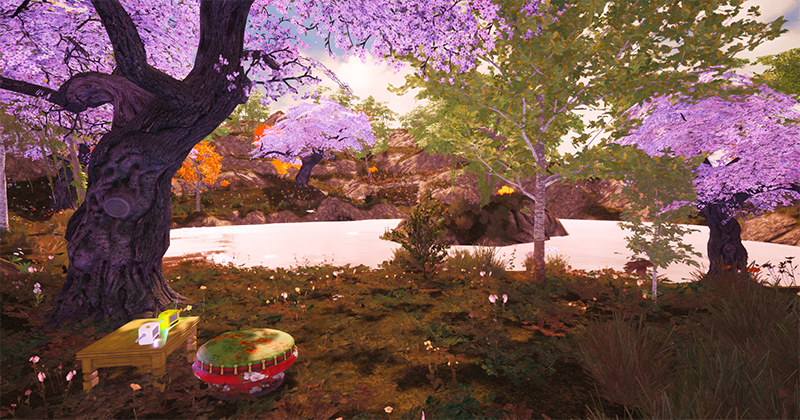
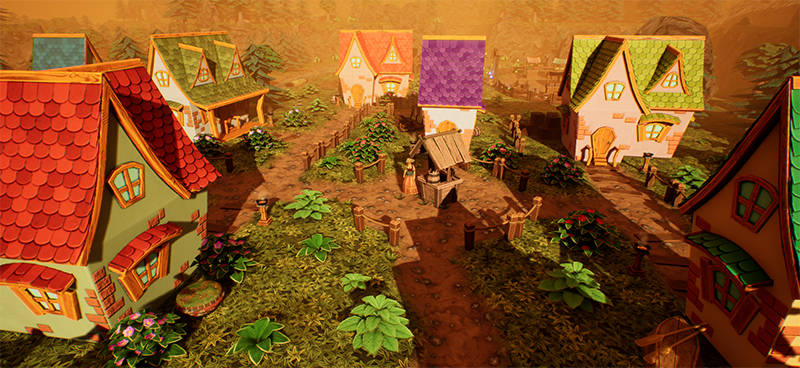
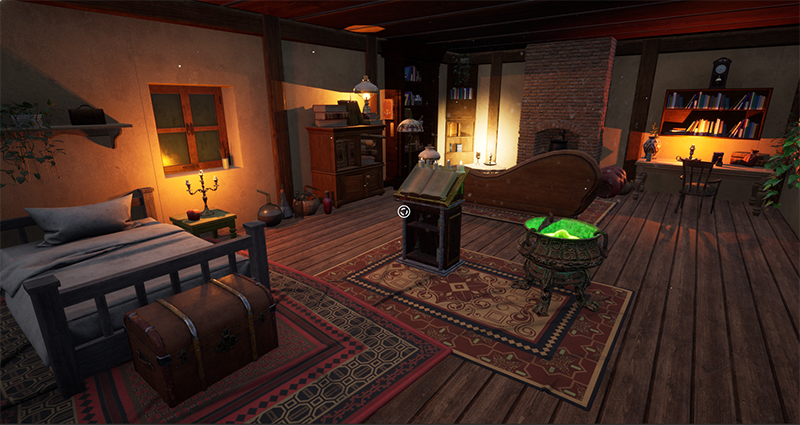
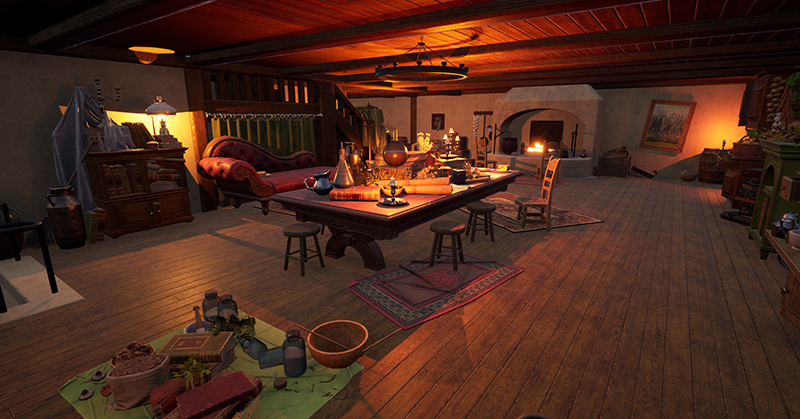
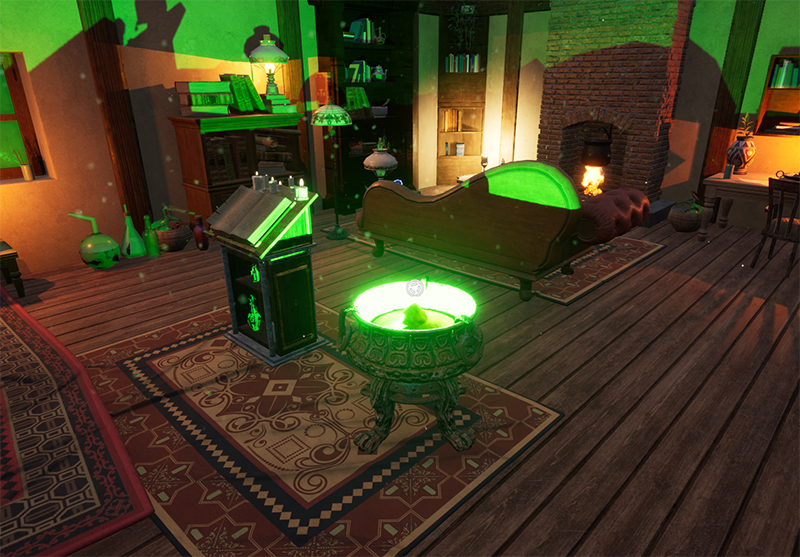
This post is part of a series celebrating the work the year 4 students have created for their honours projects. Thanks to Anna for allowing us to feature this work.








This post is part of a series celebrating the work the year 4 students have created for their honours projects. Thanks to Anna for allowing us to feature this work.
For his honours project, Johnny Viola investigated the use of motion graphics to increase engagement with history. The visuals used updated versions of colours and styles found in paintings of the period, giving the animation a rich texture that adds to the storytelling. Johnny also won a prize for this poster showcasing the work at the Honours poster day.

Visual Development – from sketch to final images
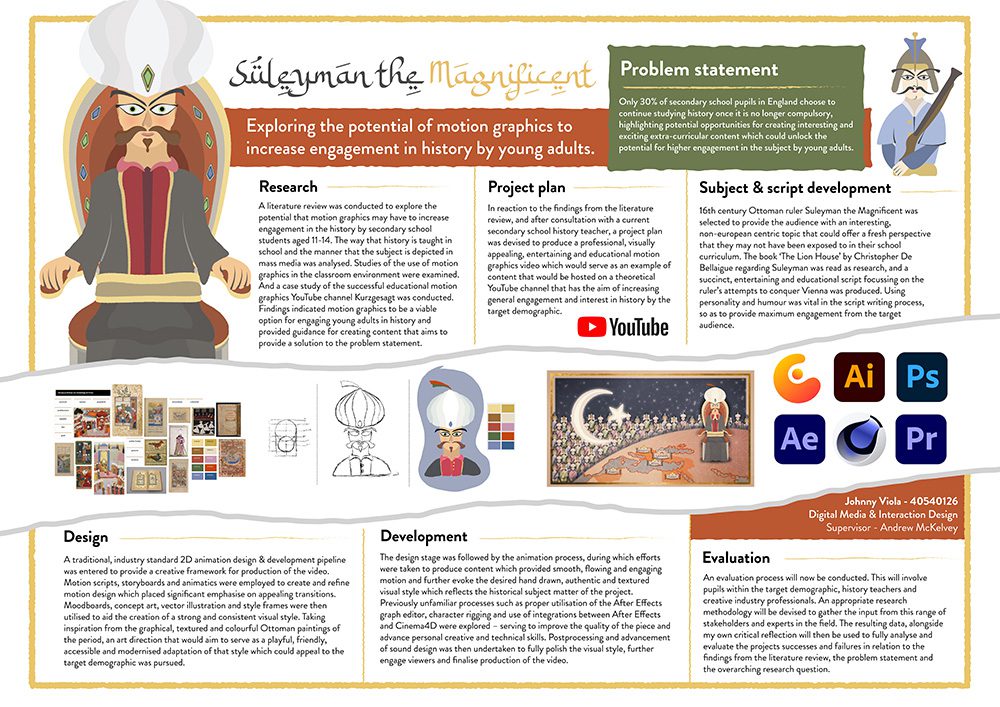
The poster explains the process Johnny followed to create the final motion graphic.
You can see more of Johnny’s work here –johnnyviola.com
This post is part of a series celebrating the work the year 4 students have created for their honours projects. Thanks to Johnny for allowing us to feature this work.
Sensory Soundscapes was created by Ellen Scott for her honours project and focussed on visualisation techniques within virtual reality (VR) experiences. The project offers a unique, interactive and fully multisensory experience that transports participants through three musical environments. Each environment explores a different musical genre and music visualisation technique that users experience in VR via the Oculus Quest 2 headset. The clip above shows a walkthrough of the project, while the images below show some of the interiors created in Unreal Engine.
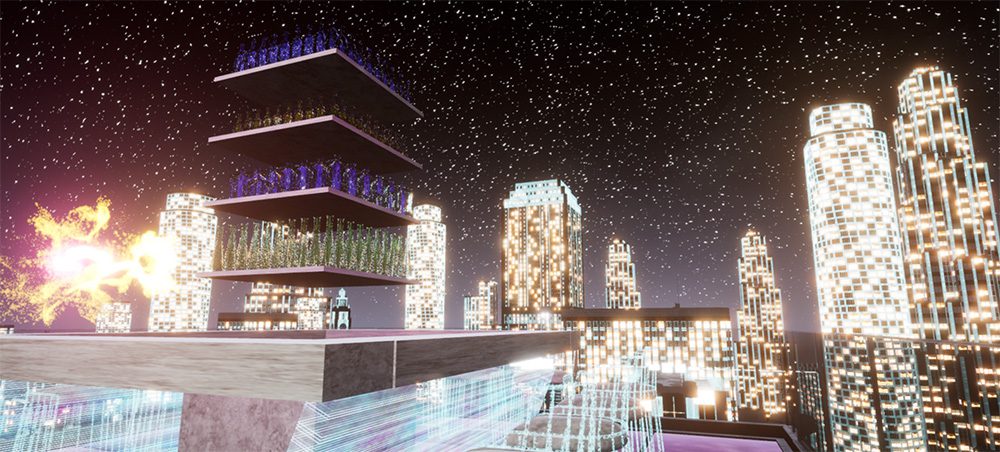
Different environments were created to represent the different soundscapes
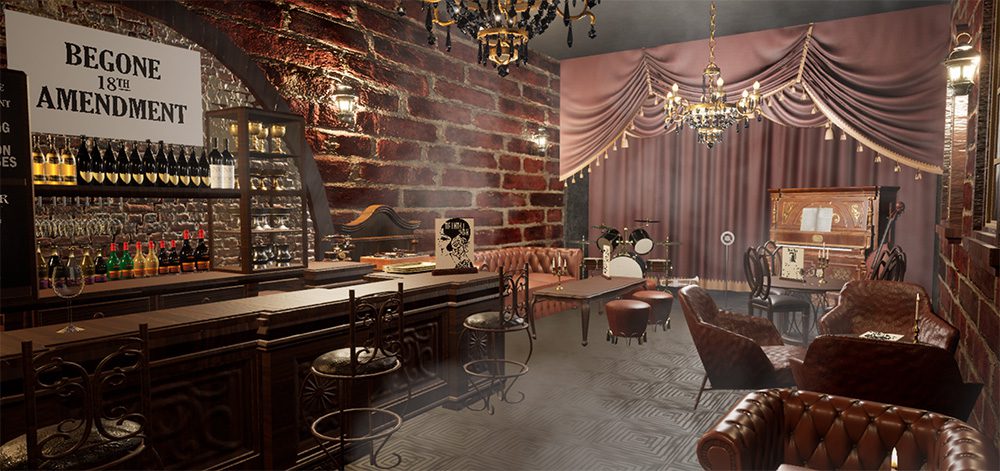
3 different bar interiors were created – this one shows the Jazz bar
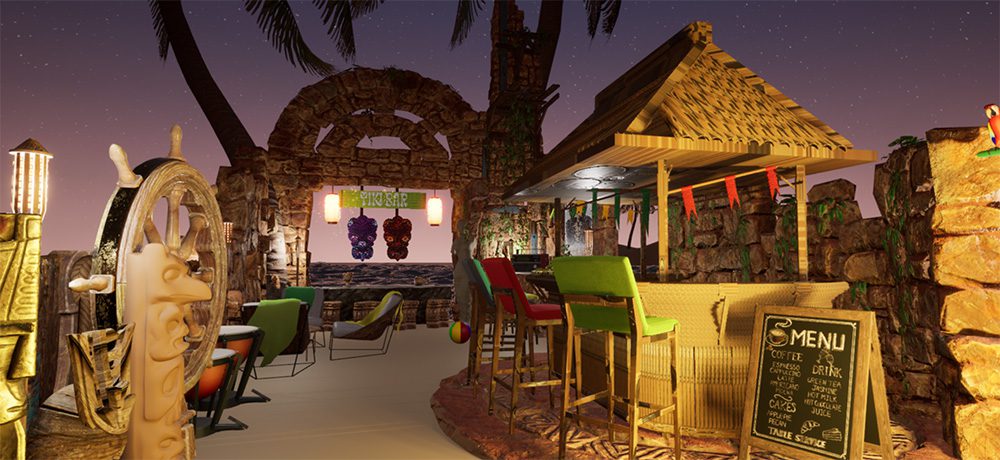
The Tiki bar
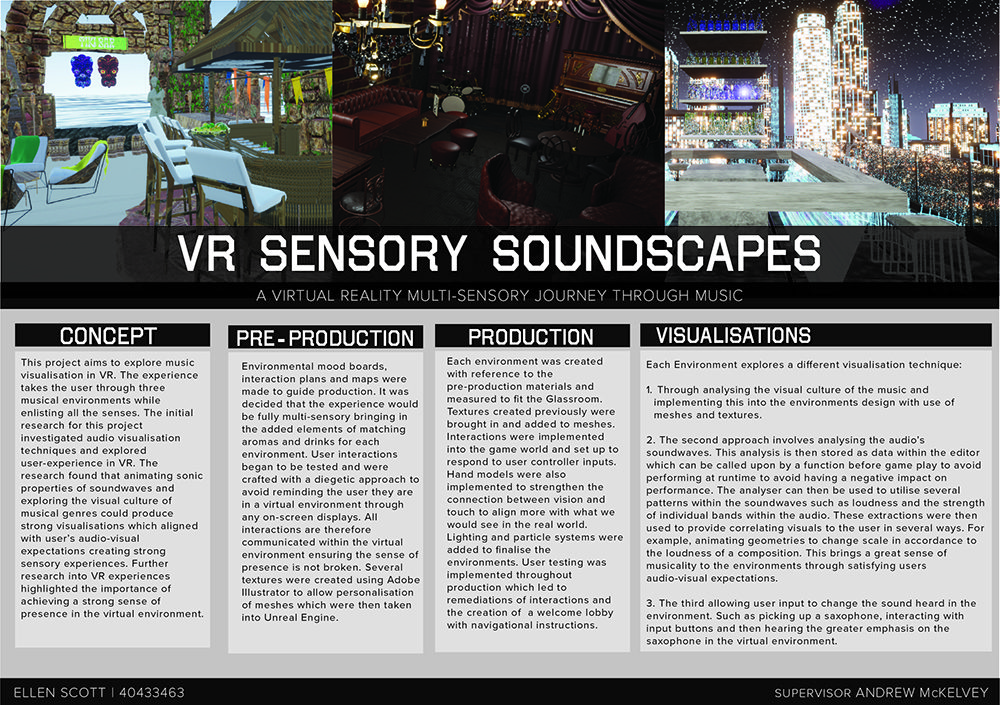
Ellen’s poster explains the process followed to create the project.
You can see more of Ellen’s work here –https://ellenlarsonscott.wixsite.com/portfolio
This post is part of a series celebrating the work the year 4 students have created for their honours projects. Thanks to Ellen for allowing us to feature this work.
BeWell is a mental well-being support and social app aimed at students. Jonathan followed a User centred process, involving his target users throughout to ensure that the solution met their needs. As well as a high-fidelity prototype suitable for user testing he created detailed brand guidelines and a design system to ensure consistency.

You can see more of Jonathan’s work here – https://www.behance.net/jonathan-wood
This post is part of a series celebrating the work the year 4 students have created for their honours projects. Thanks to Jonathan for allowing us to feature this work.
Sarah’s honours project built on an idea she had originally had during a year 3 module, to create a wellbeing app. During the honours project she took the idea in a new direction, creating a Virtual Reality experience. “Fufilment” is a relaxing space that users can investigate while undertaking mindfulness activities such as icing cakes and swimming. Inspired by Studio Ghibli environments and colour palette, the space has an eclectic feel, which is further enhanced by clever lighting and sound design (and a few pet cats).
Sarah tested her project with users, who praised the look and feel of the project, giving her useful feedback to make navigating the space straightforward, as well as ideas for activities that could be developed in the future.
You can see more of Sarah’s work here –https://sarahcarswellportfolio.com
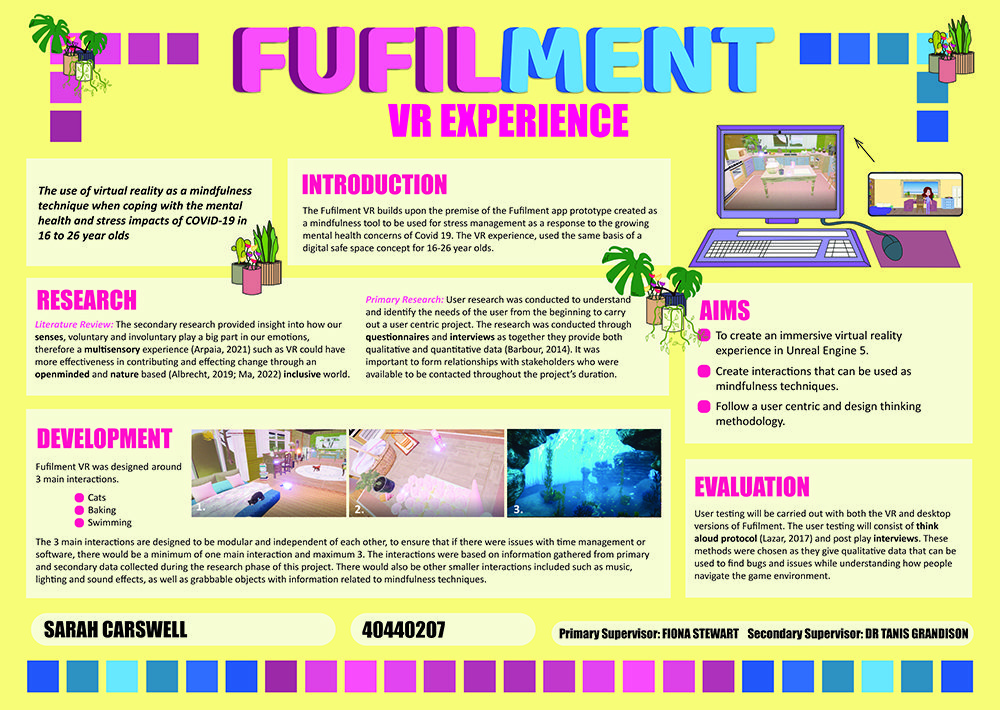
Sarah’s poster explains the process she followed to create the experience

The interior is designed to feel lived in but relaxing

The project features a surprise underwater scene
This post is part of a series celebrating the work the year 4 students have created for their honours projects. Thanks to Sarah for allowing us to feature this work.
For the honours project Ray investigated different free and low cost animation software, before creating an animatic; proving that you don’t need to spend a lot to get professional results. The scene was created in 3d space using Blender, an open source software, with the 2d character drawings slotted in between the 3d models. This allowed Ray to manipulate what the viewer would see in the final piece and create different camera angles and shot types.
Ray has already had some success with the project, winning “Best Poster” at the honours project showcase.
You can see more of Ray’s work here – https://raywyseart.wixsite.com/portfolio

The 3D space before colour and filters are used to give the cartoon effect.

This image shows how the 2d characters can be placed within the 3d space

Ray’s prize winning honours poster, which explains the process undertaken
This post is part of a series celebrating the work the year 4 students have created for their honours projects. Thanks to Ray for allowing us to feature this work.
Today we are celebrating the work of Ploy Bunluesilp, one of our recent graduates from Digital Media and Interaction Design. For one of her year 4 project’s Ploy created a virtual reality project to help refugees settle in the UK. She has written the article below to explain a little more about the project and how she is continuing to develop it after graduation.
“I wish I had this VR to help me when I first arrived in UK,” said one of the refugee users after trying the VR project that designed to help refugees and asylum seekers to settle in their new country by using virtual reality (VR).
The project was designed for the Visual Effects Storytelling module that using virtual reality, Unreal Engine (UE) and photogrammetry to see the potential of the technology on how it could help to create realistic world, storytelling and educate the users in enjoyable way.

Figure 1: The picture frame was created by photogrammetry.
The users can interact and listen to a story that introduces the characters and teaches the user how to register at a GP surgery and learn all the necessary information that will help them to prepare to start a new life in the UK.
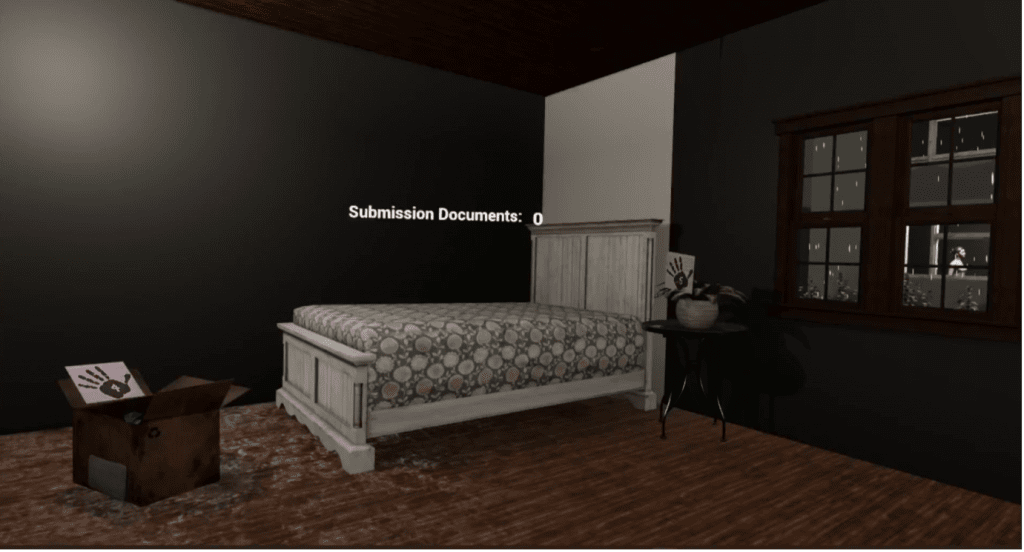
Figure 2: The user has to follow the numerical order of handprints to hear the story.
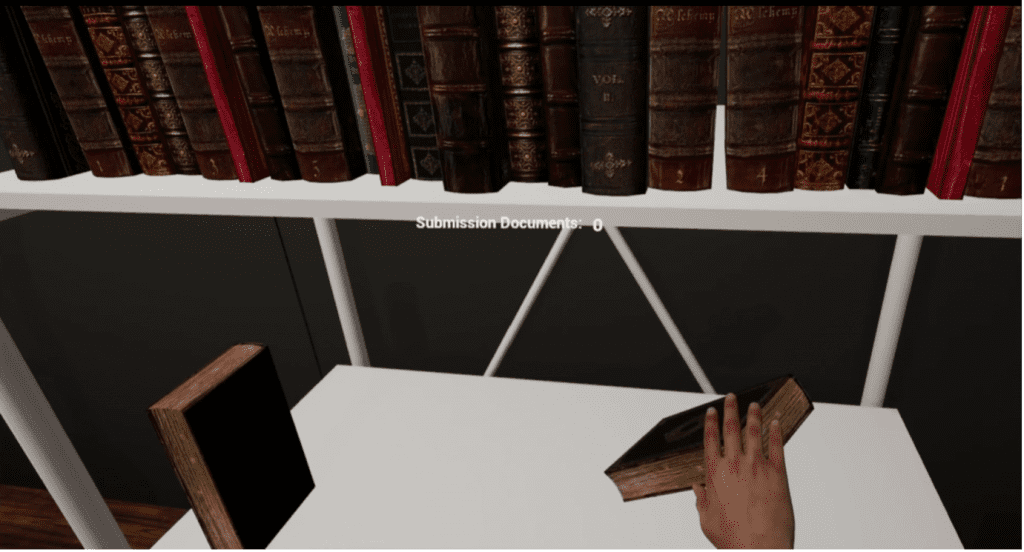
Figure 3: User is putting the book away.
In this project, the users play part of Amal who was a refugee that just arrived in the country and was put in the temporary council flat where she felt lonely and had no friends. Then her new magical friend Hope appeared to guide her through how to integrate with the new culture and what she needed to do to launch her new life.

Figure 4: When Hope appeared, the room went from being grey to being brighter.
The project was formulated based on interviews with few refugees from Syria, Iraq and Thailand as well as secondary research which applied the technique from the Design Thinking module to understand the journey of refuges and their problems.
After understanding their problems, the first prototype was designed using the narrative of own innovative story based on the primary and secondary research.
The users had to follow the numbered handprints and instructions from the voice over to navigate the space and to learn the story of Amal with the help of Hope to connect with the world. When Hope appeared to the room, the room was turned from dull to brighter room. The users had to pick up all the necessary document and register them at the GP. The goal is to give them hope and reassurance and enable them to navigate their new life.
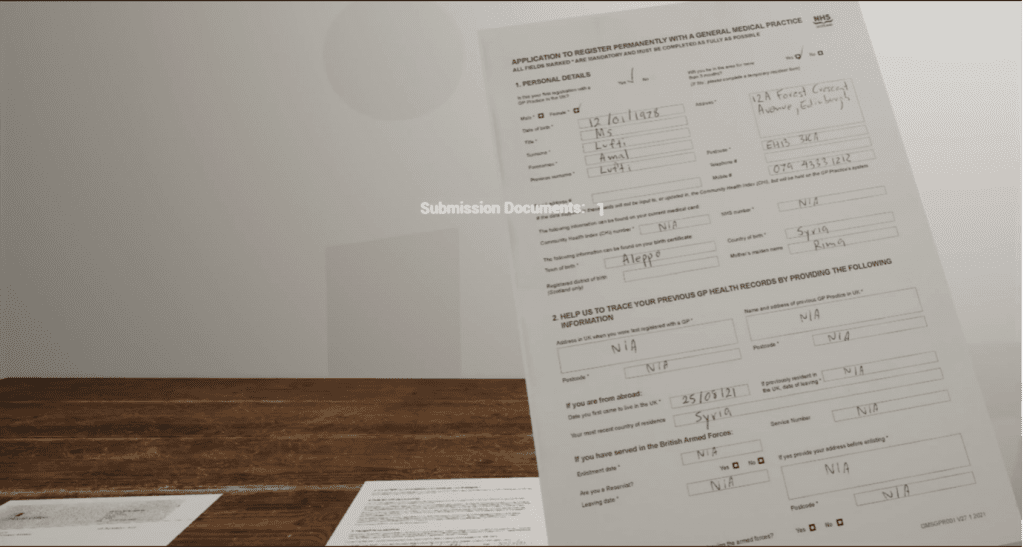
Figure 5: User picked up the document that needed to submit to GP.
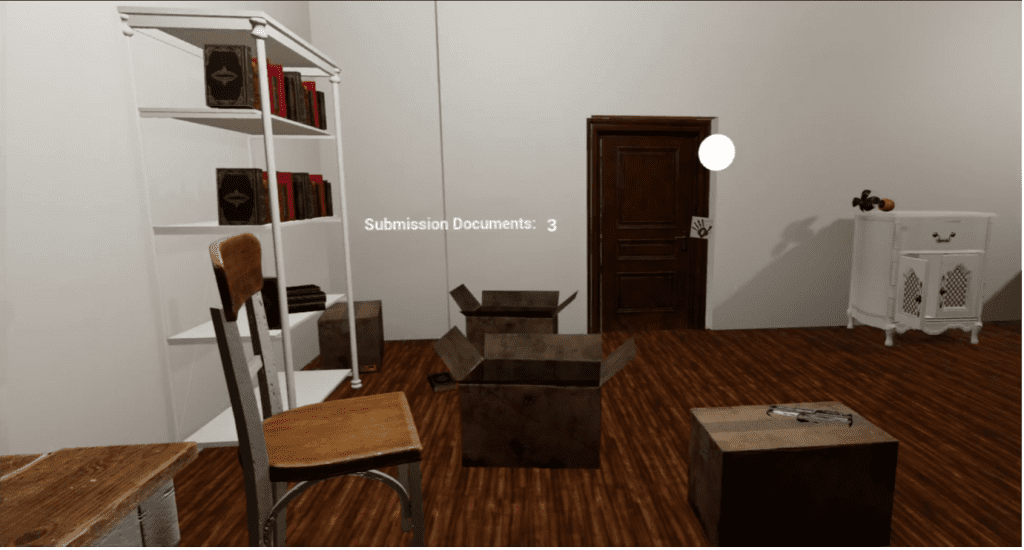
Figure 6: Interior of the room
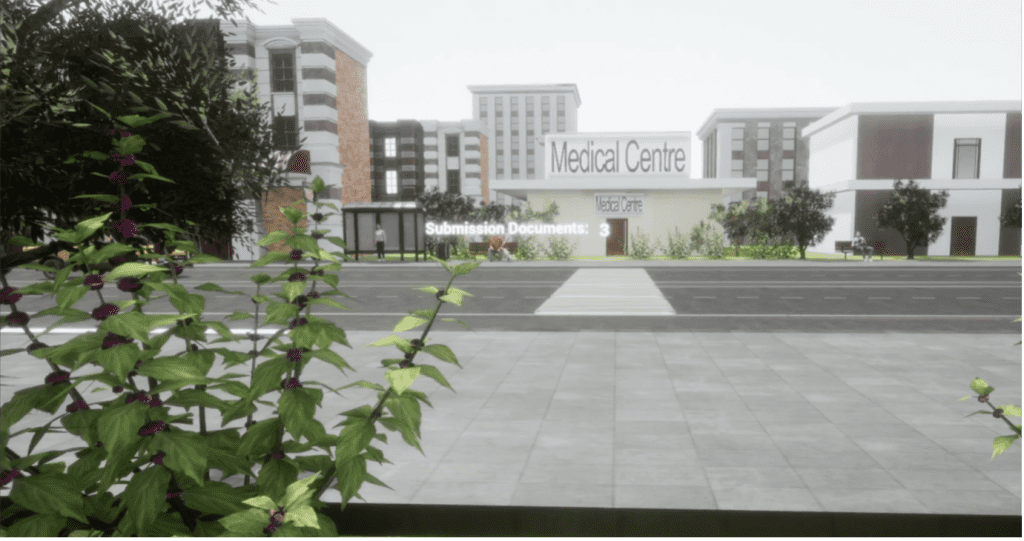
Figure 7: Exterior of the Medical Centre

Figure 8: The user was using teleportation mechanism to travel the world
The first prototype was tested by the users and received well feedback that could see the potential that it would help the refugees and asylum seekers to feel more confidence. This VR education training allowed them to learn by doing, make mistake and gave them more chances to learn what the right way to do it.
“There is always stress when you forget something… But a great aspect is to have this safe space to explore and get more comfortable with the situation you’ll have to go through in real life,” said another refugee user.
After the first prototype has been tested, the second version was created to improve on different aspects to make the project looks and feel more immersive.
In the future, more episodes would be created to help the refugees to be familiar with different scenarios.
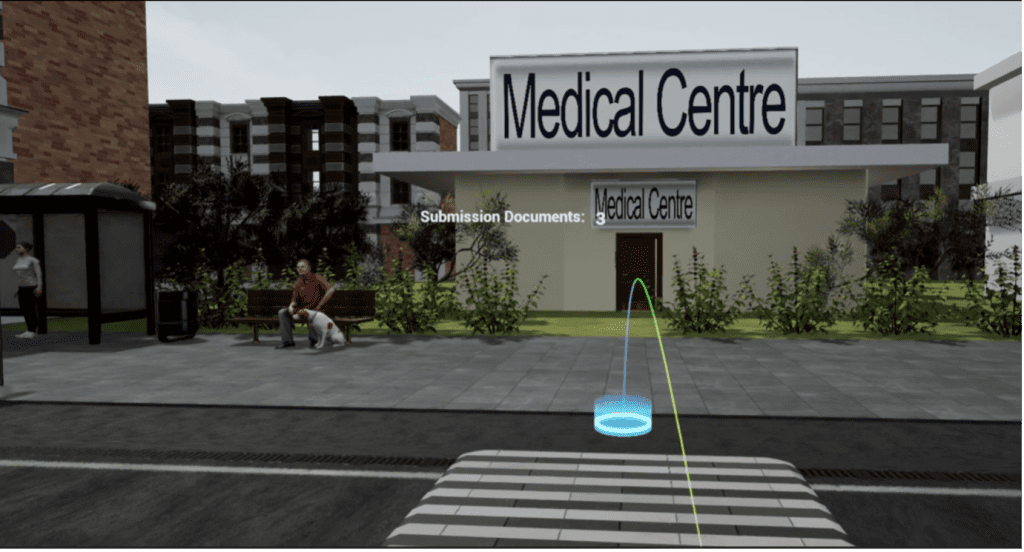
Figure 9: The computer screen showing different scenario that plan to create in the future.
On November 22, 2022, the project was shown at the Wealth of Nations Conference in Glasgow where businesses, community organisations and civic society in Scotland are supporting a Wellbeing Economy. Some of the Refugee charities that attended the conference have been showing their interests on the project and would like it to be used to the refugees that just registered with them. The project will be continued developing as it has potential to make the world a better place.
Many thanks to Ploy for sharing her project . The Visual Effects Storytelling Module is run by John Morrison and Dr. John McGowan.

Suzi working with some of the learners at the school
Fourth year Digital Media and Interaction Design student Suzi Cathro is currently undertaking a collaborative project with young disabled learners at Mason Lincoln school in Umlazi township, South Africa, a school she has had a relationship with for many years. Together they will produce an animation exploring the cultural traditions of the Zulu people.
Suzi has been running workshops teaching children the basics of animation and storytelling to facilitate the creation of their own culturally relevant story. She is using motion capture technology to accurately record movement that can be incorporated into the animation.
You can follow the project and see how the animation develops here – https://honoursprojecttrip.travel.blog/suzis-blog/
Suzi hopes that the young people she collaborated with use this experience to showcase their stories and culture and gain a sense of pride in their achievements.

Ideas sketches for characters created by the pupils.
Many thanks to Suzi and the young people of Mason Lincoln Special school for sharing their project with us. The project is funded by the Edinburgh Napier University student Mobility grants.
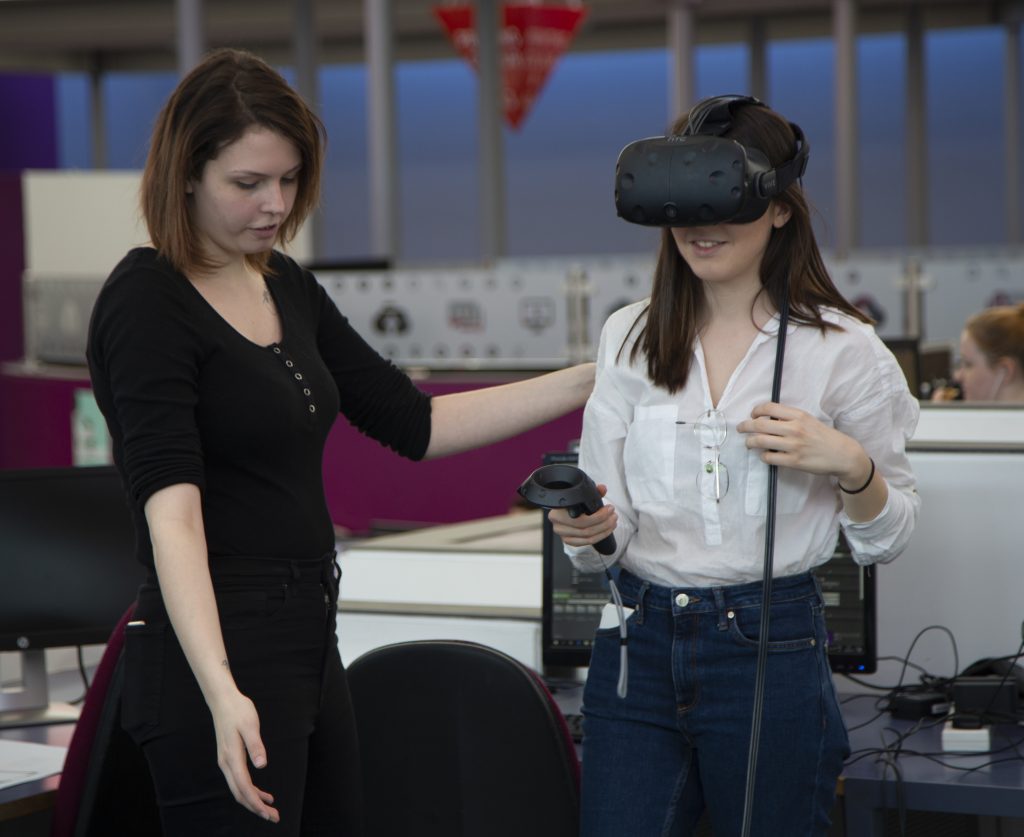
Beth helps a participant try out her Virtual Reality project.
Here are some images of the recent year 4 poster presentation day, the student’s chance to showcase their projects. We had some guests from Shopify to judge the poster competition and present the prizes. They were particularly impressed with the range of projects produced, but finally settled on Manon’s “CultureMapper” app which aims to engage young people with cultural experiences. She followed a Design Thinking process and involved her users at each step to create an appealing prototype. We’ll be sharing some of the projects in more detail over the next few months.
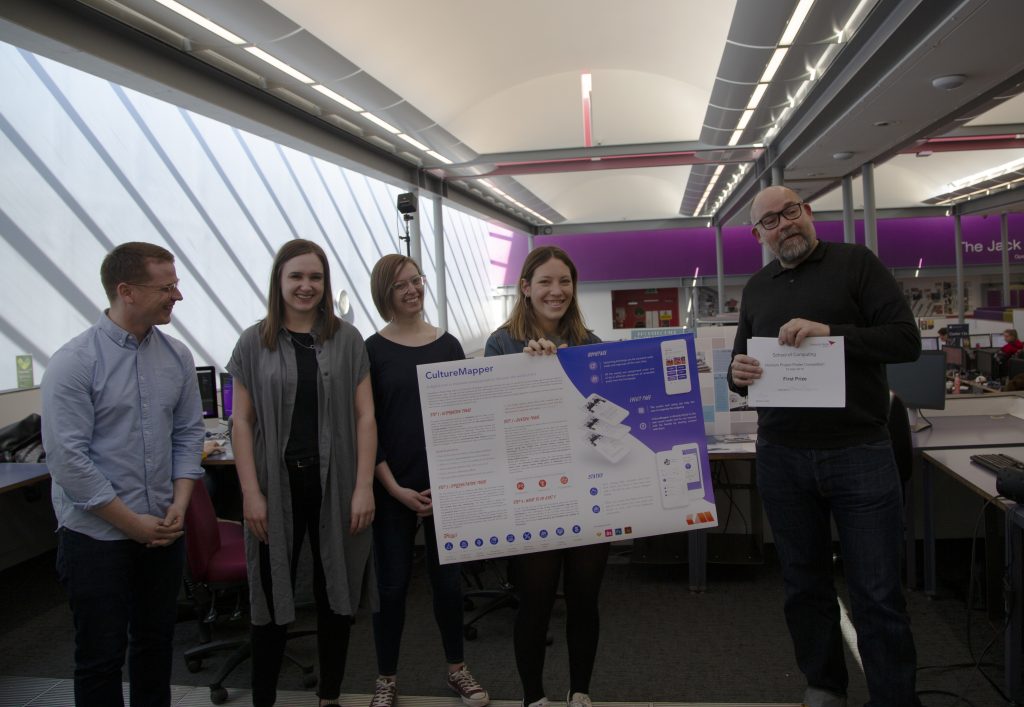
Manon receiving 1st prize for her poster
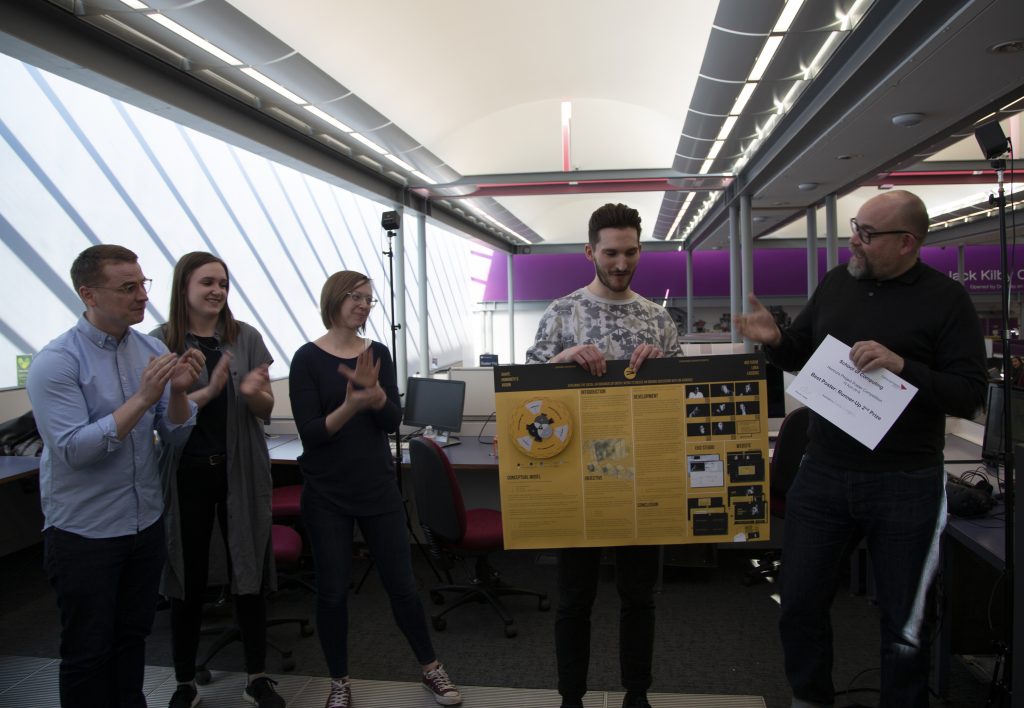
Luka was awarded second prize
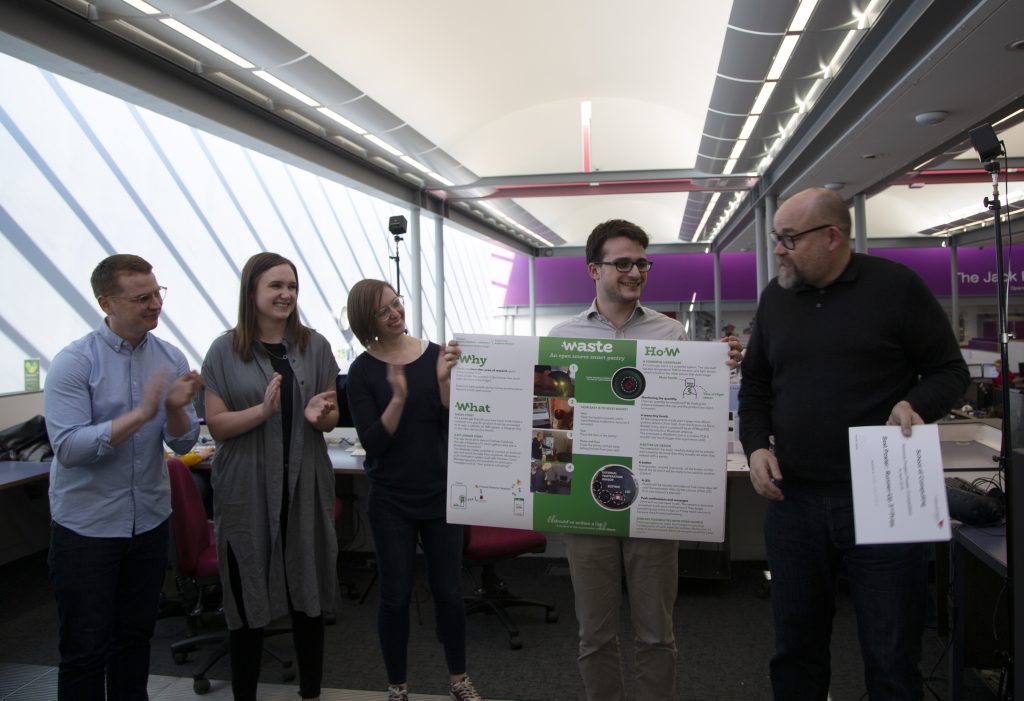
Gabriele received 3rd prize for his work on using technology to cut down food waste.
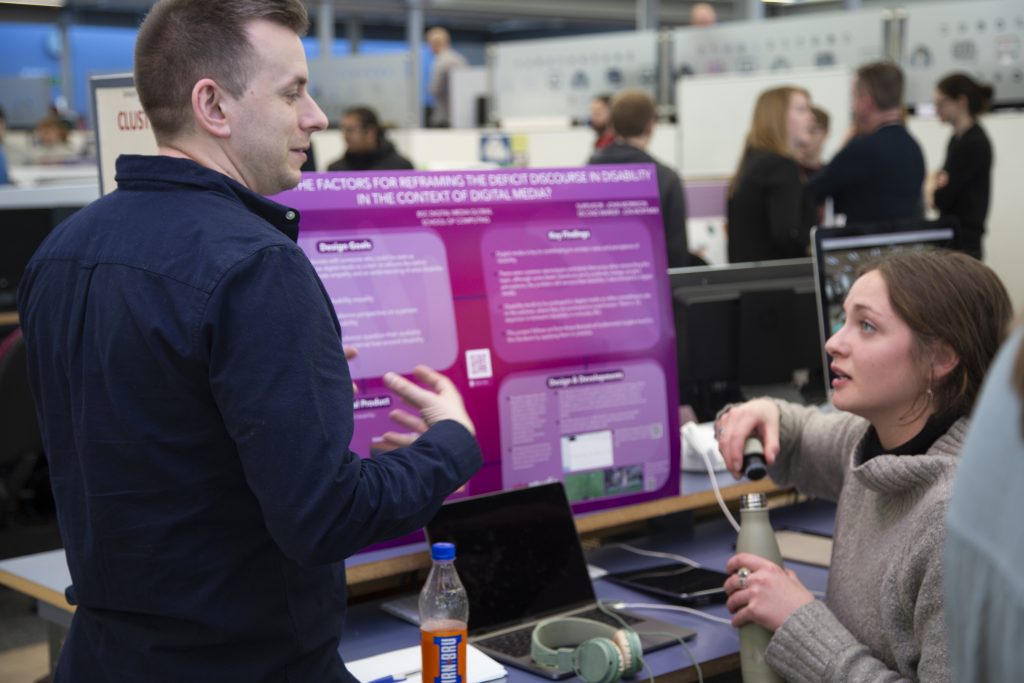
Thora discusses her project with lecturer Jon Mortimer
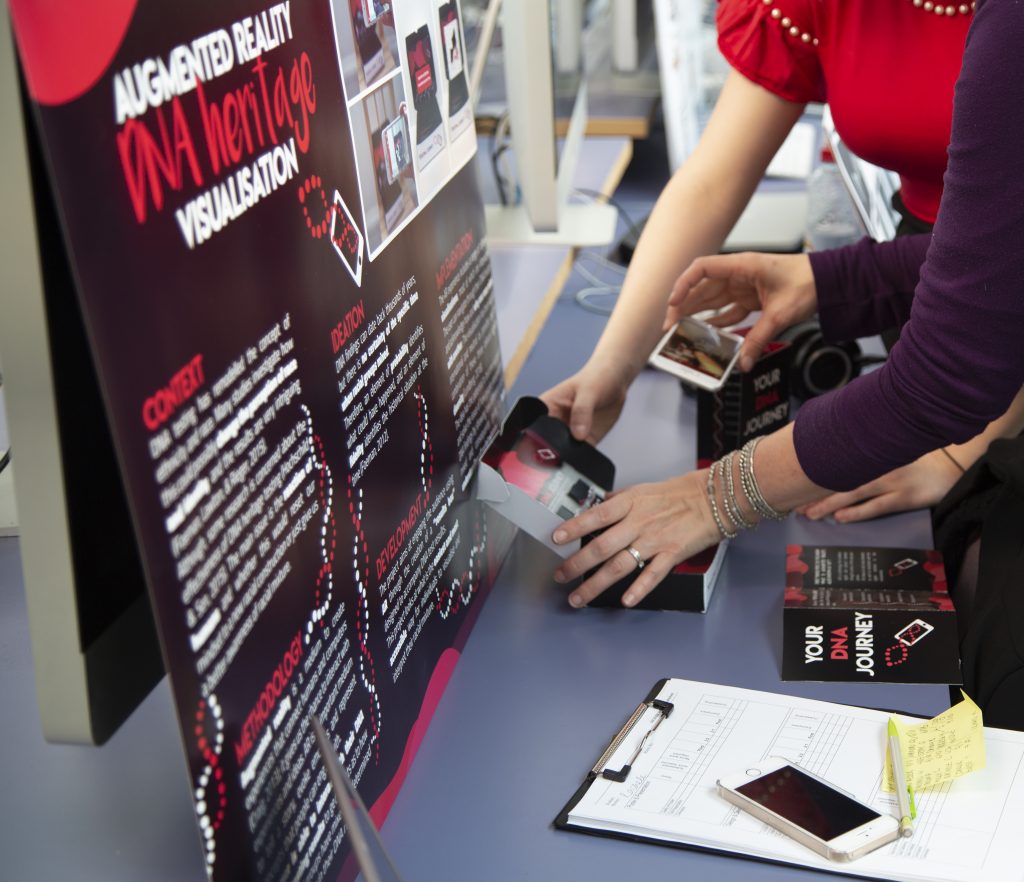
A close up of Rachele’s Augmented Reality project in action
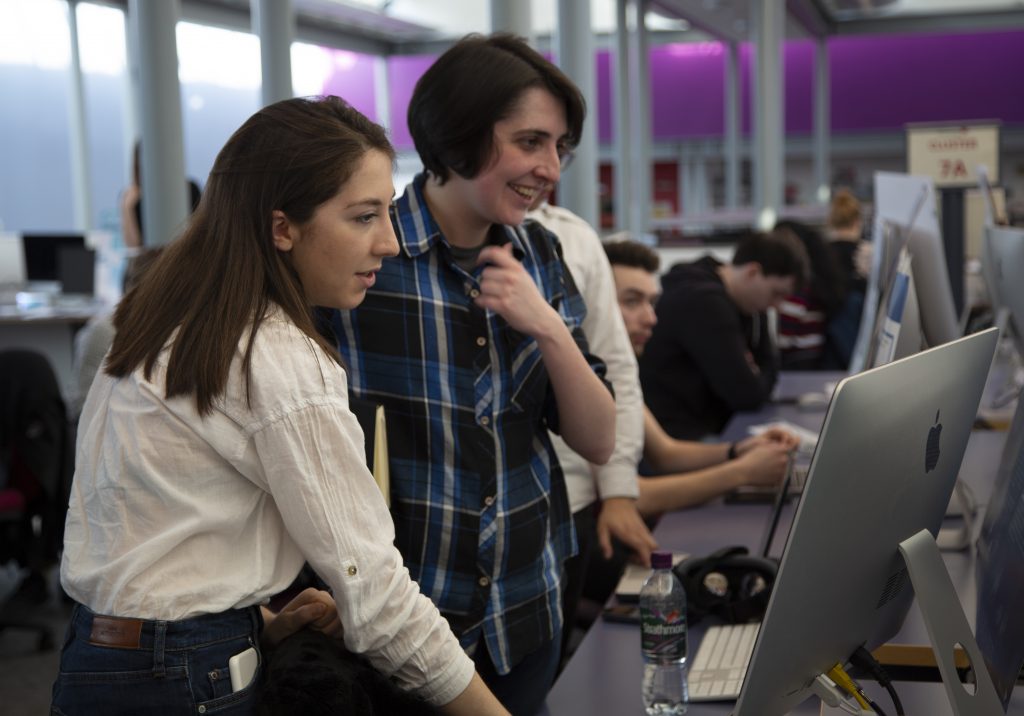
This work was produced as part of the 60 credit honours project, overseen by Dr. Tom Flint.
Thank you to Elena (year 3 Digital Media) for taking the photos.
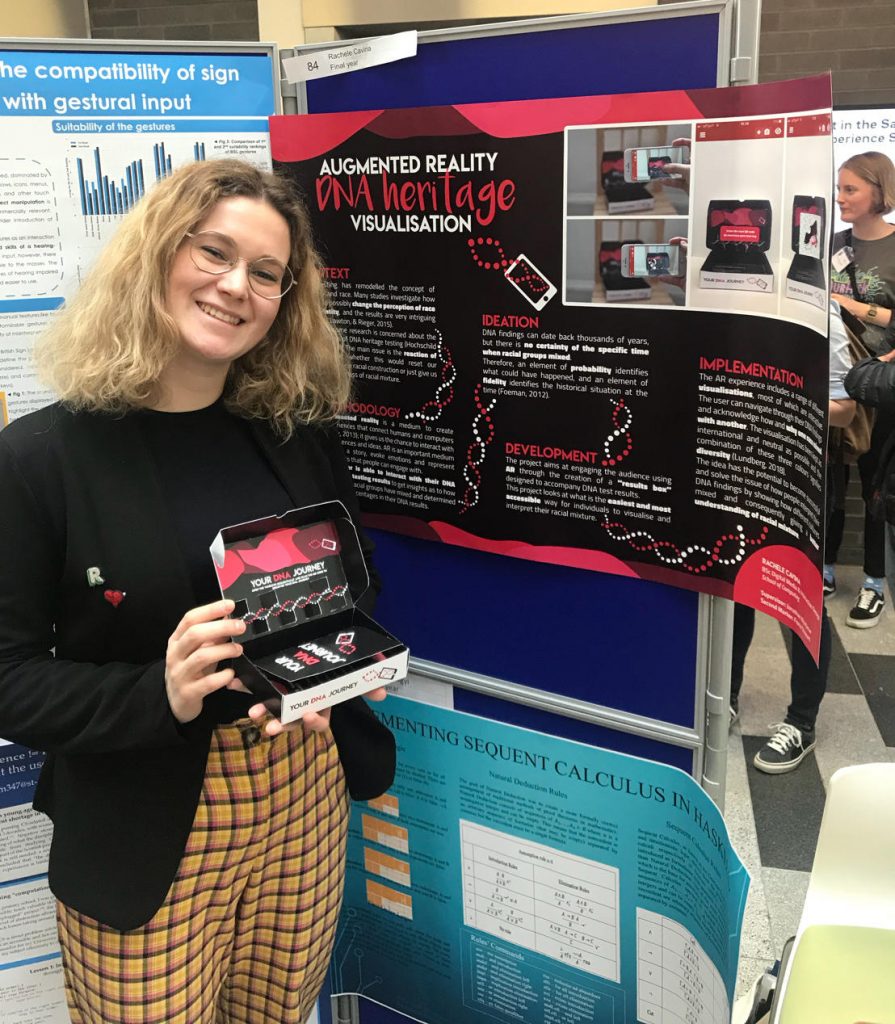
Rachele with her wining poster
Rachele Cavina, one of our final year BSc Digital Media students has come home with first prize in the final year category at the BCS Ada Lovelace Colloquium. The event happens in April every year and brings together female students of Computing from across the country. She used the event to showcase her honours project, which uses Augmented Reality and animation to visualise DNA heritage. You can see more of the project here – https://reci1996.wixsite.com/rachelecavina/copy-of-interactive-map
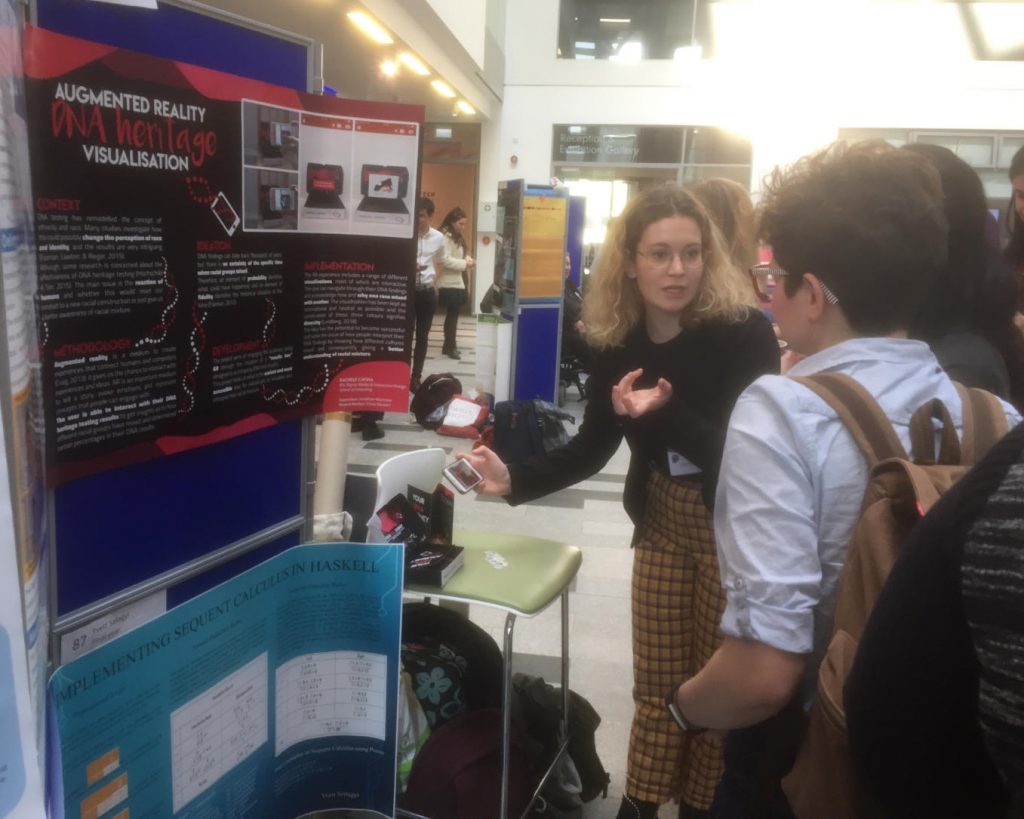
Rachele discusses her work with other delegates

Rachele was joined at at the event by Mari-Nikol and Elena, two of our year 3 students who also presented their work.
Thank you to Rachele for allowing us to share her work.
© 2024 Digital Media and Interaction Design
Theme by Anders Norén — Up ↑
Recent Comments